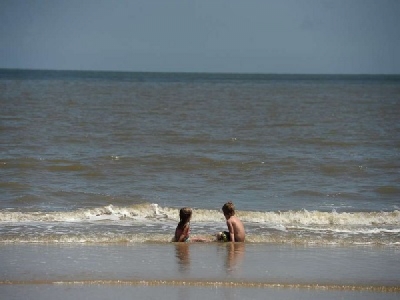
Posted on January 1, 2019
The restoration of some 17 miles of coastline at the McFaddin National Wildlife Refuge is gearing up to begin, with the preliminary approval of permit amendments.
The project, and an additional nearly three-mile stretch that’s already been completed, will reduce how often and how much seawater inundates interior freshwater marshes located within the refuge. It’s also expected to slow shoreline retreat along the coastline and restore historic, native beach habitat.
The habitat, part of one of the largest freshwater marshes on the Texas Gulf Coast, has been through several hurricanes that have essentially wiped out the existing beach and dune system.
Instead of being inundated with saltwater only as the result of storm surge, the water now enters the intermediate- and freshwater marshes several times a year. This harms marsh vegetation and habitat for waterfowl, shorebirds and other animals.
Other animals that live or have critical habitat in the refuge include several species of sea turtles, waterfowl and the West Indian Manatee.
“Without addressing this source of saltwater intrusion, the loss of marsh between the current shoreline and (the Gulf Intracoastal Waterway) is imminent,” according to a biological evaluation of the site.
The restoration project started with a pilot project for a nearly three mile stretch of coastline but then funding ran out, said Texas General Land Office Interim Communications Director Karina Erickson.
Since then, the refuge was given $26.5 million related to the Deepwater Horizon oil spill, which will be used for this project. The money came from a 2016 settlement with BP, which leased the oil rig that released about 3.19 million barrels of oil into the Gulf of Mexico after a spring 2010 explosion.
“Now that funding has been secured, we are moving ahead with the remainder of the project,” Erickson said. “As intended, the pilot project taught us several lessons and we are now able to move ahead with a greater understanding of what is and is not needed.”
The approval of permit amendments by the Jefferson County Commissioners Court earlier this month signifies that these lessons are being implemented and work on the rest of the project will soon begin.
The experience of the pilot project showed the need for two more locations to dredge sand from, the addition of three new staging areas for construction equipment and implementation of updated conservation measures.
Construction on this section of the project is planned to begin next summer and be completed within a year. During construction, the immediate area will be closed to protect surrounding wildlife and for visitors’ safety.
The long-term hope is that this project will restore the severely degraded beach and dune habitat to provide a buffer to the adjacent wetlands from saltwater, as well as protect Jefferson County infrastructure. It’s also expected to cause an increase in ecotourism, Erickson said.
As it stands, the beach doesn’t contain suitable nesting habitat for turtles. No nesting attempts have been documented on McFaddin Beach since Hurricane Ike in 2008.
This project will create 20 miles of restored dune, potentially resulting in nesting ground for Kemps ridley, leatherback, hawksbill, loggerhead or green sea turtles.
It will also continue to preserve the feeding and resting habitat for migrating and wintering populations of waterfowl.
“Meeting the habitat needs … of wetland-dependent resident and migratory birds requires maintaining a range of coastal marsh habitat types and sequential stages of the plant community within these marsh types,” the biological evaluation said. “Providing freshwater inflows and restricting saltwater intrusion are critical to maintaining the (area’s) historic continuum of fresh, intermediate and brackish saline marshes.”
The first three miles have already shown evidence of these improvements, Erickson said.
“Immediately after the creation of the first three miles of beach, we saw birds beginning to nest and wildlife returning to the area,” she said.
Source: Beaumont Enterprise





